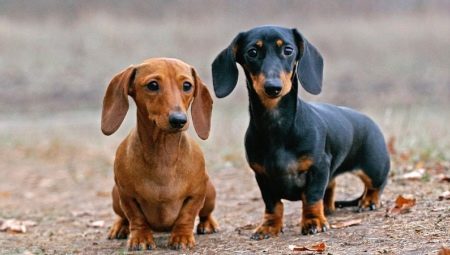If you decide to have a pet dog of miniature size, then you should pay attention to dwarf dachshunds or their even smaller brothers - rabbit. This is an ideal option for a four-room pet, which, due to its small dimensions, will fit perfectly even in a small Khrushchev and become a devoted and cheerful friend.
Just do not discount his hunting qualities, which will have to find peaceful application. Therefore, before starting a mini-dachshund, you need to study its character well, learn how to care for it and how to feed it, and also how to choose the right puppy.

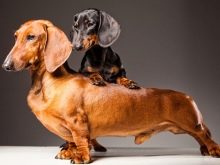

Origin history
At the end of the 19th century, Germany set out to create a variety of dachshund that could easily crawl into the holes of the smallest rodents (ferrets, rabbits, foxes, badgers). To do this, it was necessary to reduce the standard rate in size, while maintaining its hunting qualities. And the breeders did it. So there was a dwarf dachshund, which weighed only 5 kg, almost 2 times less than its predecessor, and after it was created and even more miniature version - rabbit dachshund, with a maximum weight of 3.5 kg. The nature of the new subspecies of the breed remained the same as that of their older counterparts, they differed only in more modest dimensions compared to them.
Over time, the dwarf dachshund has lost its original hunting purpose and has become one of the most popular types of miniature dogs for decorative breeding.
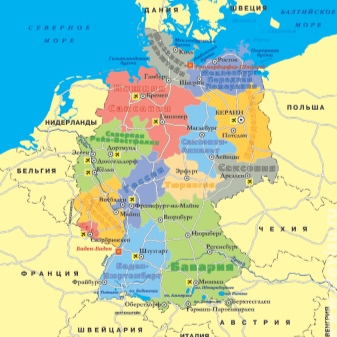
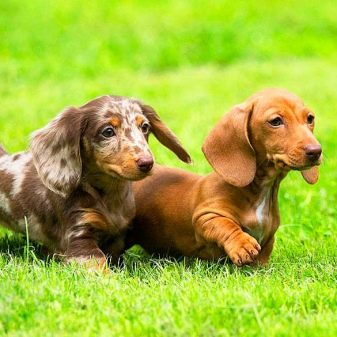
Description
All dachshunds, including dwarf ones, very bright and characteristic appearance.
- The main features of the breed are short stature and a long stocky body, which helps dogs climb into the deepest holes.
- Another distinctive feature is very short, but thick and powerful legs. Moreover, the forelimbs are much stronger and stronger than the hind limbs, since they perform a more important function - they dig up dachshunds to get to their prey. Feet may be slightly curved, but this is not a breed defect. Dachshunds run quite quickly and, thanks to good stamina, are able to overcome very large distances.
- Despite the small size, the muscles of this breed are highly muscular. They have a dense body with a wide protruding chest and a long tail.
- You can’t confuse the muzzle of a dachshund with any other breed. The head of the dog has an elongated shape, tapering to the nose, large ears hanging down on the sides and strong jaws.
- The weight of an adult dwarf dachshund can reach a maximum of 6 kg, and rabbit even less - 3.5 kg. The growth of the first varies from 16 to 25 cm, and the second grow in height from 10 to 15 cm, males are usually taller than females.
- But the main parameter by which the variety of the dachshund is determined is the girth of the sternum. In dwarfs this figure is 30-35 cm, and in rabbits - less than 30 cm. It is precisely on the basis of the volume of the chest (or OGK) that a specific type of dachshund is determined. However, this can only be done after she reaches the age of one.
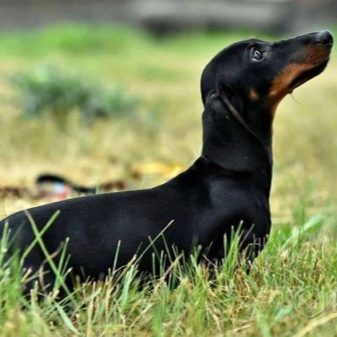
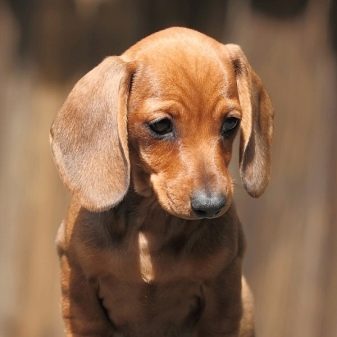
The sizes of puppies of all kinds are almost the same, therefore it is better to buy babies not from private breeders, but in nurseries with a good reputation.
Also, when choosing a puppy, you need to see how at least one of his parents looks to make sure that you don’t have a standard rate instead of a mini.
By color, the dachshund can be divided into three types.
- Plain (or pure) - These dogs are uniformly colored, their color may be red, chocolate or pale yellow.
- Two-tone, while one of the colors always dominates, and the second is several tones lighter and is located as if in the form of separate spots on the body. The main, as a rule, is black or brown, which is complemented by light areas on the tips of the paws, on the sides of the muzzle and in the chest area.
- Tri-color or spotty (most often there are marble or tiger colors) - these are the rarest and most unusual varieties of dwarf dachshunds.
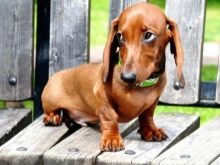
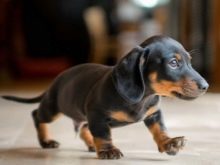
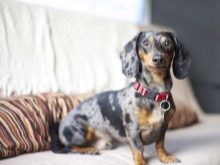
Character Features
Dwarf dachshunds have a cheerful, cheerful and affectionate character. They make excellent companion dogs that love to communicate with their owner and are ready to follow him anywhere, accompanying him on long walks. However, to get such a faithful and obedient four-legged friend, you need to actively engage in his education.
Dachshund needs constant contact with the owner, this is especially important in puppyhood, when the formation of the character and habits of the dog. She cannot be alone for a long time - out of boredom, the dog will start to ruin everything around: scratch the wallpaper, tear things, spoil shoes and the fact that “it lies badly”. Therefore, if you are not ready to give your pet enough attention and your time, then it is better to give preference to another breed. If the dachshund is left to its own devices, then you will receive an aggressive, wayward and naughty dog that will do whatever it wants, without recognizing the authority of the owner.
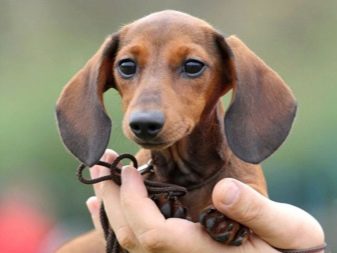
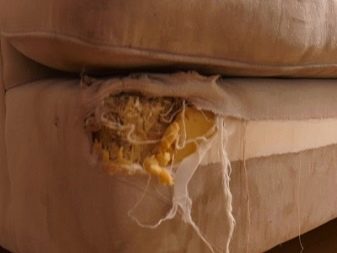
Dachshunds are very active people who need somewhere to splash out their energy. Therefore, they need long walks (3 times a day for at least half an hour each). During the walk you need to not only go a fairly large distance, but also play with your pet and work out the teams. They also need to somehow realize their hunting instinct. Therefore, they love to dig holes and hunt for everything that moves: birds, fish, mice.
Since the blood of hunters flows in their veins, they are inherent in such qualities as perseverance, patience, stubbornness and incredible courage. However, with improper upbringing or its absence at all, these character traits can reach an extreme degree and will turn into stubbornness, willfulness and complete disregard for the will of the owner. It is advisable to work with your pet at the dog handler. You can start doing this from the age of 4 months.
The advantage of the breed is that dachshunds are very smart, smart and easily trained, so they can easily learn commands and norms of proper behavior.
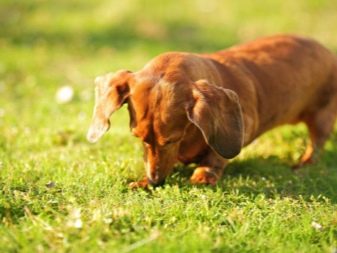
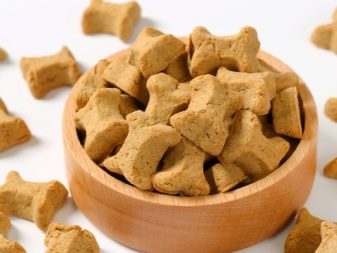
During training, it is preferable to use positive reinforcement, that is, give the dog a “tasty treat” or praise it for the correctly performed action. In no case should one be rude to a dachshund, shout at it, or even beat it. These dogs are very touchy, vindictive and will cruelly avenge you for the humiliation of their dog dignity. The dachshund should have only one person, whom she will consider the owner. However, she perceives all members of the family as her flock and treats them kindly and with love.
Since the dachshund is a very egocentric dog with a great sense of self-esteem, it is desirable that she be the only four-legged pet in the house, otherwise jealousy for other pets is inevitable, which can result in serious aggression towards them. Knowing the characteristics of the dwarf dachshund, you can decide whether it suits you or not.
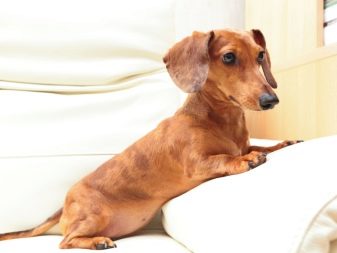
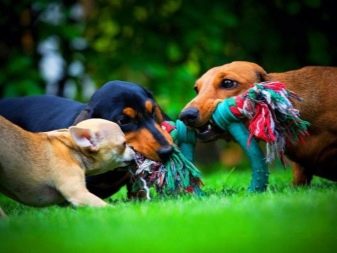
How many years live?
It is scientifically proven that the life expectancy of small dogs is higher than that of large brothers - their body wears out more slowly. Dwarf dachshunds live on average up to 12 years. But with proper nutrition and good care, they can overcome the 15-year milestone. And if your pet is lucky not only with the owner, but also with genetics, then he has a chance to meet even his 20th anniversary.
To extend the life of your four-legged friend, you need to follow these simple guidelines.
- In order to prevent viral diseases, you need to vaccinate your pet every year, as well as protect it from ticks during their activity.
- Regular visits to the veterinarian and taking tests 2 times a year will reveal a possible disease or malfunction of an organ at an early stage. After all, it is known that it is better to prevent the disease than to treat it later.
- Sterilization of bitches and castration of males prevents tumors of the genital organs, and in females - also mammary glands.
- One of the weakest points in the dachshund is the spine. Therefore, it is necessary to avoid excessive load on it and various injuries that the animal can get by jumping even from a small hill - a chair or sofa.


Kinds
Mini dachshunds can differ not only in the color of the coat, but also in its length and texture. According to this parameter, they are usually divided into three types:
- short-haired (or smooth-haired);
- long-haired;
- wirehaired (the rarest species).
With short-haired dachshunds, the hassle is least, since the length of their hairline does not exceed 3 cm. It is enough to wipe such dogs after walking with a wet cloth, and you can use a brush no more than 1-2 times a week. Longhair and wire-haired dachshunds have significantly richer hair and undercoat, which means they will need additional care - periodic haircuts and daily combing.
In spring and autumn, when the street is dirty and slushy, you will have to wash “hairy” dachshunds much more often than their smooth counterparts.
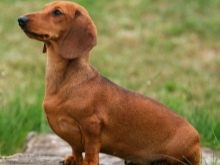
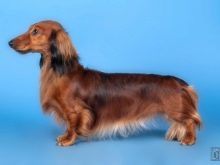
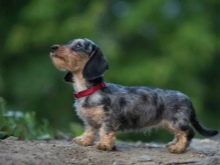
From each other, these two species differ quite strongly. They have different hair texture.
- In long-haired hair, soft, smooth and delicate to the touch, slightly curls. The longest hair on the ears - because of this feature in full face, they are somewhat reminiscent of spaniels. Wavy “strands” hang from the sides, the chest just below the neck is also covered with thick curly hair, and the furry tail crowns the body.
- Wire-haired dachshunds are distinguished by abundant vegetation mainly on the muzzle - they have a mustache and a beard, which makes them a bit like terriers. They also have elongated, coarse coarse hair on the chest and body, although their length is shorter than the previous type.
The most common type of dachshund is, of course, shorthair. Wire-haired for Russia is quite exotic, they are not very popular in other European countries, although they are often found in native Germany.
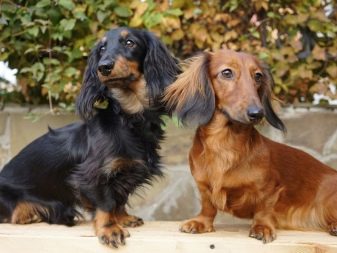

Comparison with a regular fee
The main difference between the dwarf dachshund and the usual one is only its dimensions - height at the withers, girth of the sternum and weight. They are smaller than the standard variety. It can also be noted that mini-taxes have a more stubborn, wayward and obstinate character than their ancestors.
For other indicators (color and length of the coat and other external parameters), all representatives of this breed are almost identical. Hunting qualities are developed equally in both ordinary and small dachshunds.
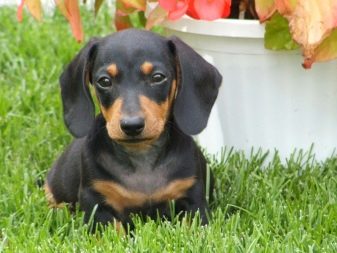
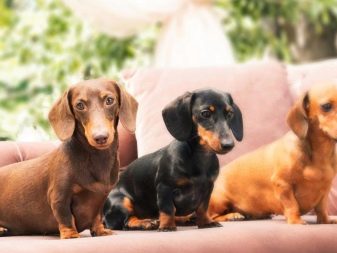
How to choose a puppy?
You should buy a puppy in a kennel, which has all the necessary documents for the implementation of activities for breeding dogs. Preference should be given to experienced breeders who have long and successfully worked in the market. In choosing a nursery, you can focus on the recommendations of friends or at least read reviews about a particular "seller" of taxes on the Internet. You can also seek advice from cynological communities.
A conscientious breeder must provide the future owner with all the necessary documents: veterinary and puppy passports, as well as the pedigree of the dog. Between him and the future owner of the puppy, a contract of sale must be concluded confirming the fact of the transaction.
You can acquire a puppy from the age of 1.5 months, when he has already ceased to need breast milk and has learned to eat on his own. At this point, he should be prophylactic and vaccinated.

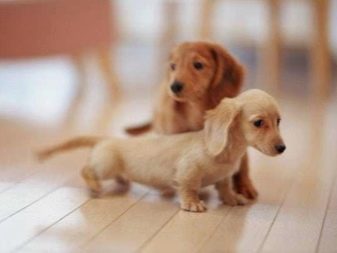
Be sure to get information about the puppy's parents, it is advisable to see mom and ask for a photo of his father, to find out his character. In appearance, parameters and behavioral characteristics of parents, one can judge what their baby will be when they become adults. This data is especially important if you plan to use their descendants for breeding or participation in exhibitions.
And finally, the most important stage is the direct choice of the puppy. The tips below will help determine which baby to make a four-legged member of your family.
- Appreciate the puppy's appearance. It should be of medium build: not overfed and too plump, but not thin and bony. Choose a puppy with a well-defined muscle corset and with straight, without sagging, tail and back.
- One of the main parameters is the quality of the coat. It should be silky and shiny, and its color should be rich and vibrant. Dull cover may indicate health problems or lack of vitamins and minerals in the body. Also, the coat should be uniformly thick, without bald patches and dandruff.
- A wet nose, clean ears and the absence of purulent discharge from the eyes are essential components of a healthy puppy.
- Be sure to open and examine the mouth of the baby. Normally, the gums and tongue of the small "taxon" are bright pink, and the mouth should have as many teeth as it should be at its age.
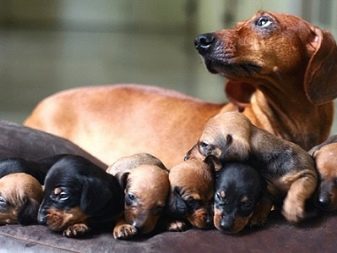

Watch all the babies and choose an energetic, playful, cheerful and courageous puppy, but not showing aggression to his brothers and sisters. A puppy with pronounced leadership qualities can cause you a lot of trouble with its stubborn wayward character - you will have to spend more time, effort and nerves on its upbringing.
For a small pet you need an eye and an eye. His curiosity and increased activity can lead to damage to your property, especially at the stage when the baby's teeth are cut.Therefore, hide shoes, wires and all your belongings away from puppy teeth, and instead, suggest a little bully gnaw on toys and bones from the pet store.
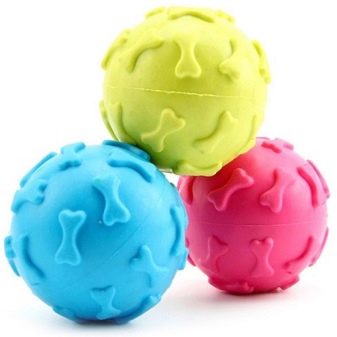
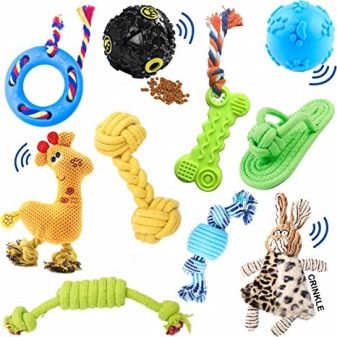
How to care?
Dachshund care should be comprehensive. It must include regular brushing. This is an unpleasant procedure for dogs, so you need to start it as soon as possible so that your pet is used to it. Teeth are cleaned to rid them of plaque and to prevent tooth decay and tartar. This is done by special veterinary drugs at least 1 time per week.
Also, from an early age, the dog needs to cut its claws. "Manicure" can be done in the veterinarian or at home, having acquired special tweezers. But carrying out this procedure yourself, you must be careful not to hurt that part of the claw where the blood vessels already begin.

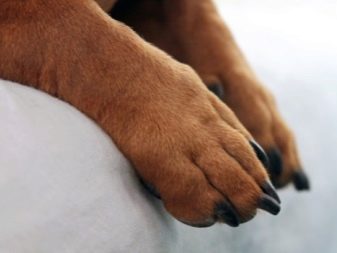
Caring for dachshund hair is also very important, especially if it is long. Hair should be combed regularly with a special comb. First, they follow the direction of hair growth, and they scratch not only the back, chest and abdomen, but also the paws and tail, and then brush them in the same places, but against the hair. Such a massage will not only help prevent the appearance of tangles and relieve dust and hair loss, but also improve blood circulation and remove excess sebum.
If the dog’s coat has stopped shining, and even more so it has started to fall out strongly, then this is an occasion to consult a doctor and pass the necessary tests. The reason may be poor nutrition, lack of nutrients, as well as various diseases.
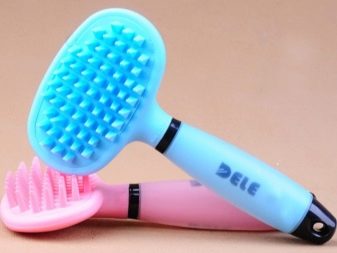

Once every 3 months, the pet needs to be treated from internal and external parasites. Anthelmintic drugs fight the former, and destroy the latter with drops at the withers. Since dachshunds, especially short-haired ones, are very heat-loving, they should be walked in warm clothes in cold weather, and in waterproof overalls in rainy weather. After walking, they wipe their paws with a damp, and then a dry cloth. Once or twice a month, they wash the dogs with a special shampoo in warm water. Bathing small dachshunds before six months of age is not recommended. Do not be lazy and regularly inspect your pet's ears, clean them with a cotton swab from sulfur. If you suspect an ear tick, contact your veterinarian immediately. Since dwarf and rabbit dachshunds are mini-dogs, they can be trained to walk in the tray at home.
However, this does not relieve the owners of the need for walking, which is necessary not only to cope with natural physiological needs, but also so that the dog can throw out the accumulated energy.
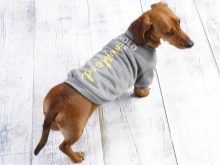
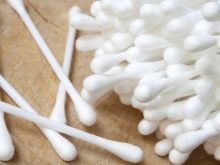
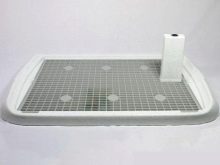
What to feed?
This is one of the main issues facing the person who got a pet. If he became a dwarf dachshund, then you need to take into account the fact that this breed has a greater tendency to obesity. This means that it is impossible to overfeed it in any case, since excess weight leads to shortness of breath and other serious health problems.
First of all, you need to determine the type of food: will it be “drying” or natural food. But keep in mind - you need to choose one thing, you can’t combine industrial feeds and “natural”, because these two types of food are digested differently in the stomach. Their combination will lead to disruption of the housing and communal services.
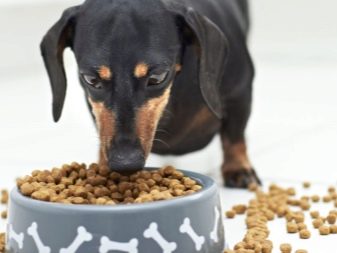

If you opted for dry food, then give preference to premium brands - cheap feeds contain mainly flavoring colorants, and expensive ones contain more protein and other ingredients necessary for dogs.
The advantages of dry food over natural food is that it is balanced - it includes all the vitamins and minerals necessary for dogs in the right proportions. But, of course, you can not exceed the daily dosage - the manufacturer indicates the amount of the daily rate depending on the weight of the animal on the package.
If the body does not react well to dry food (this can be expressed as diarrhea, vomiting, deterioration in the quality of the coat), then try changing the manufacturer.
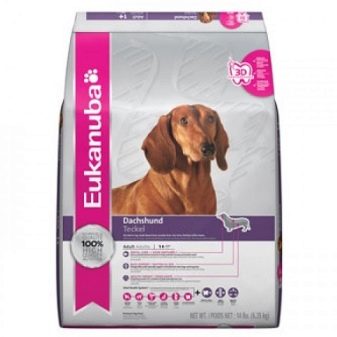

If you decide to feed the four-legged pet “natural”, this does not mean that you need to give him food from your table. Salty, pepper, spicy and fatty foods are contraindicated for dogs, so you will have to cook separately for your four-legged pet. Dachshund requires a large amount of protein - it can be obtained from meat (chicken or beef) and low-fat fish, you can still give cottage cheese, eggs and dairy products.
It is better to boil the meat, since raw contains at least more protein, but at the same time more helminths, which is why the pet will have to worm off more often. Pork for dogs, especially dwarf dachshunds, is a banned product, as it is very oily. Tubular bones must not be given to dogs - they can damage the sensitive esophagus of small dogs. In addition to protein, a dog’s diet must include energy sources - carbohydrates. They are contained in cereals, it is better to choose buckwheat, oatmeal or rice, you can even mix them. Cereals are cooked in water or in meat broth. The last option for dogs is most preferable - such porridge will smell like meat.

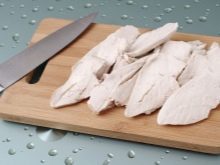
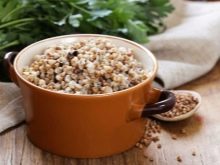
Be sure to give dachshund vegetables and fruits - either in kind, or in the form of vitamin and mineral supplements, which are sold in pet stores. Sweet for a dwarf dog is contraindicated. You can not feed her cookies, sweets, chocolate.
Food should not be given a dachshund immediately after preparation - it needs to be slightly cooled so that your pet does not burn his mouth and throat. Food must be fresh. After your four-legged friend ate, you should clean the cup of food. But the water should be in constant access. It is enough to feed an adult dachshund 2 times a day - in the morning and in the evening, but at the same time. And it is advisable not to do this before, but after a walk - walking on a full stomach will be much harder for your pet.

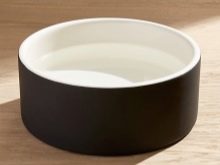

Up to six months puppies need 5-times feeding, closer to 6 months you can reduce it to 4 times a day. After six months, in adolescence, dachshunds should be given food 3 times a day, and already starting at the age of one year, reduce feeding to 2 times.
Any dog needs to communicate with the owner, and a dwarf dachshund due to its nature - especially. If you give a small pet attention, care and affection, it will repay you with incredible love and devotion.
In the next video, you can take a look at the dwarf dachshund in motion.
